Recombinant Human AK4 protein(Ala2-Tyr223), His&GST-tagged
| Cat.No. : | AK4-3973H |
| Product Overview : | Recombinant Human AK4 (P27144-1) (Ala 2-Tyr 223) was expressed in Insect Cells, fused with the N-terminal polyhistidine-tagged GST tag at the N-terminus. |
| Availability | April 20, 2025 |
| Unit | |
| Price | |
| Qty |
- Specification
- Gene Information
- Related Products
- Case Study
- Application
- Download
| Species : | Human |
| Source : | Insect Cells |
| Tag : | GST&His |
| Protein Length : | Ala2-Tyr223 |
| Form : | Supplied as sterile 20mM Tris, 500mM NaCl, pH 8.0. |
| Molecular Mass : | The recombinant human AK4/GST chimera consists of 460 amino acids and has a calculated molecular mass of 53 kDa. It migrates as an approximately 46 kDa band in SDS-PAGE under reducing conditions. |
| Endotoxin : | < 1.0 EU per μg of the protein as determined by the LAL method. |
| Purity : | > 94 % as determined by SDS-PAGE |
| Storage : | Samples are stable for up to twelve months from date of receipt at -20°C to -80°C. Store it under sterile conditions at -20°C to -80°C. It is recommended that the protein be aliquoted for optimal storage. Avoid repeated freeze-thaw cycles. |
| Concentration : | Please refer to the hard copy of CoA. |
| Gene Name | AK4 adenylate kinase 4 [ Homo sapiens ] |
| Official Symbol | AK4 |
| Synonyms | AK4; adenylate kinase 4; adenylate kinase 3 , adenylate kinase 3 like 1 , AK3, AK3L1; adenylate kinase isoenzyme 4, mitochondrial; adenylate kinase 3-like 1; ATP-AMP transphosphorylase; GTP:AMP phosphotransferase; mitochondrial adenylate kinase-3; nucleoside-triphosphate-adenylate kinase; AK3; AK3L1; AK3L2; MGC166959; |
| Gene ID | 205 |
| mRNA Refseq | NM_001005353 |
| Protein Refseq | NP_001005353 |
| MIM | 103030 |
| UniProt ID | P27144 |
| ◆ Recombinant Proteins | ||
| AK4-463H | Recombinant Human AK4, Gly & Pro tagged | +Inquiry |
| AK4-965HF | Recombinant Full Length Human AK4 Protein, GST-tagged | +Inquiry |
| AK4-488H | Recombinant Human AK3L1 Protein, GST-tagged | +Inquiry |
| AK4-585R | Recombinant Rat AK4 Protein | +Inquiry |
| AK4-241R | Recombinant Rat AK4 Protein, His (Fc)-Avi-tagged | +Inquiry |
| ◆ Cell & Tissue Lysates | ||
| AK4-8945HCL | Recombinant Human AK3L1 293 Cell Lysate | +Inquiry |
| AK4-001HCL | Recombinant Human AK4 cell lysate | +Inquiry |
Case 1: Liu R, et al. Int J Biochem Cell Biol. 2009
Adenylate kinase 4 (AK4) is a bit of an oddball in the adenylate kinase family because it doesn't show enzyme activity in test tubes, even though it looks a lot like its active relatives. Researchers haven't nailed down exactly what AK4 does or why it doesn't work the same way. However, they noticed higher levels of AK4 in cells under low-oxygen conditions and in models of ALS, a neurodegenerative disease. When they used shRNA to reduce AK4 in certain cells, the cells didn't grow as well and were more likely to die. On the flip side, increasing AK4 in another cell type helped them survive oxidative stress. It turns out that AK4 interacts with mitochondrial ADP/ATP translocases more when stressed, hinting that AK4 might have a backup role in energy management. Although AK4 can still bind to nucleotides, it carries a different amino acid in its active site than other active adenylate kinases, explaining its lack of function. Swapping this part with the right amino acid can bring back its activity, offering clues into its potential functions and therapeutic uses.
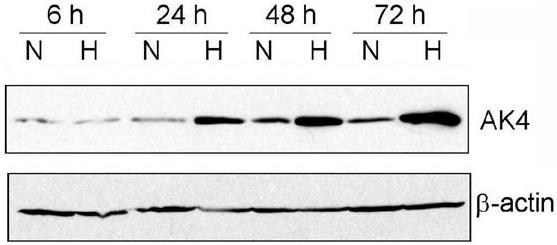
Fig1. AK4 protein levels in SH-SY5Y cells under normal or hypoxia conditions.
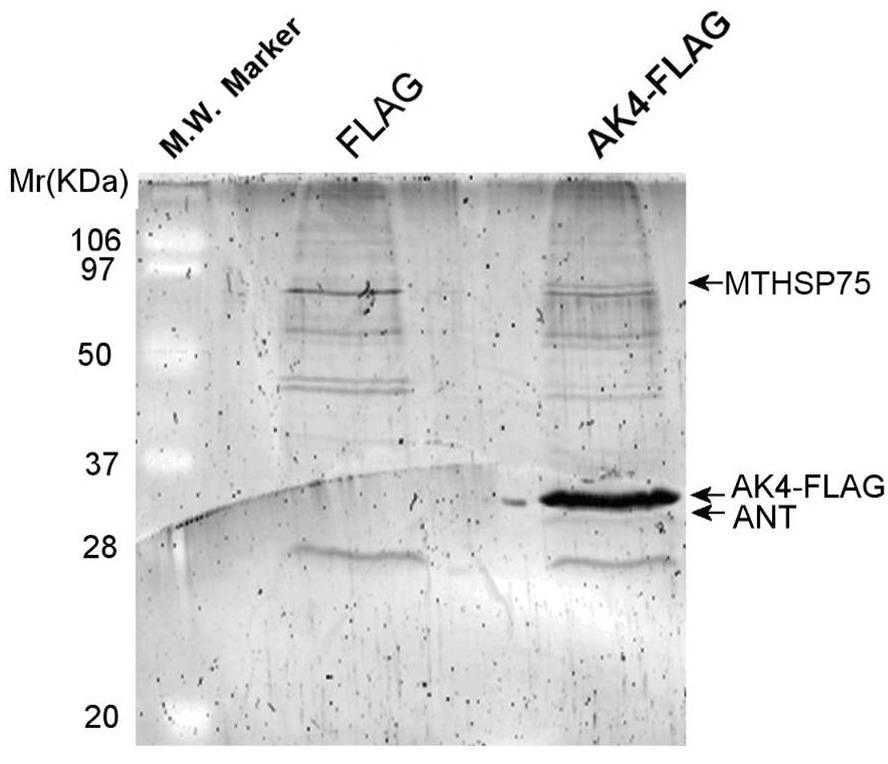
Fig2. The Sypro Ruby staining image of protein immunoprecipitated by AK4-FLAG from HEK293 cells over-expressing AK4-FLAG.
Case 2: Chin WY, et al. Front Immunol. 2021
Macrophages are the body's first responders against invaders, with two main types playing different roles: M1 and M2 macrophages. M1s are like the infantry, stirred up by signals like IFN-γ and LPS to fight with inflammatory weapons, while M2s act more like medics, reducing inflammation thanks to IL-4 and IL-13. Now, Adenylate kinase 4 (Ak4) is the enzyme at the heart of ATP and energy regulation, balancing cellular powerlines by shifting phosphates among different nucleotide types. Although researchers didn't fully grasp Ak4's impact on macrophages before, recent findings shed light: it's mainly active in M1s, ramping up ATP production but limiting the harmful byproducts. Knocking down Ak4 even boosts ATP levels and reduces harmful ROS, while also turning down the dial on the inflammatory surge and energy-hungry glycolysis. Interestingly, Ak4 doesn't change which macrophage type gets turned on (M1 or M2), but it loops back with certain cell metabolism pathways, particularly Hif1α and AMPK, to regulate inflammation genes.
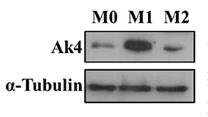
Fig1. Ak4 protein expressions were analyzed by Western blotting.
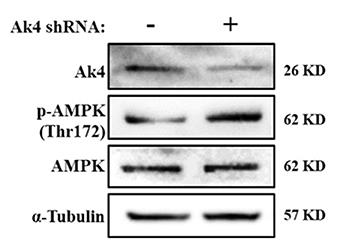
Fig2. Expressions of Ak4, AMPK, and p-AMPK were analyzed by Western blotting.
Adenylate Kinase 4, or AK4, is a crucial enzyme mainly hanging out in our mitochondria and helps keep the cellular energy game strong by moving around phosphate groups among nucleotides—the energy movers and shakers in our cells. It also plays a role in how tissues grow and develop. People have been studying AK4 a lot because it's linked to different cancers, where it pushes along cell growth and can even help cells thumb their noses at chemotherapy, which makes it a hot topic in cancer research and therapy development.
Researchers are turning to recombinant AK4 for a deeper dive into cancer development, energy handling, and how cells cope with stress. This version of AK4 is particularly useful for peeking into how it might be pulling strings in cancer pathways, like AKT signaling and how cells react to low oxygen. Companies like Thermo Fisher Scientific are on it, offering tools and resources to buy recombinant AK4 for research, helping push the boundaries of what we know and potentially how we treat a bunch of diseases.
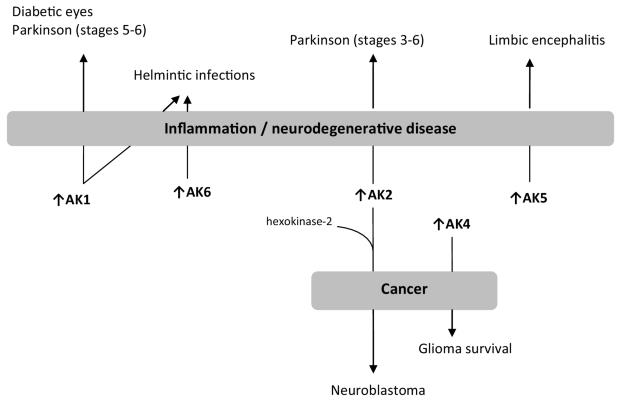
Fig1. The connections of human AKs. (Mihaela Ileana Ionescu, 2019)
Not For Human Consumption!
Inquiry
- Reviews
- Q&As
Ask a Question for All AK4 Products
Required fields are marked with *
My Review for All AK4 Products
Required fields are marked with *
Inquiry Basket


